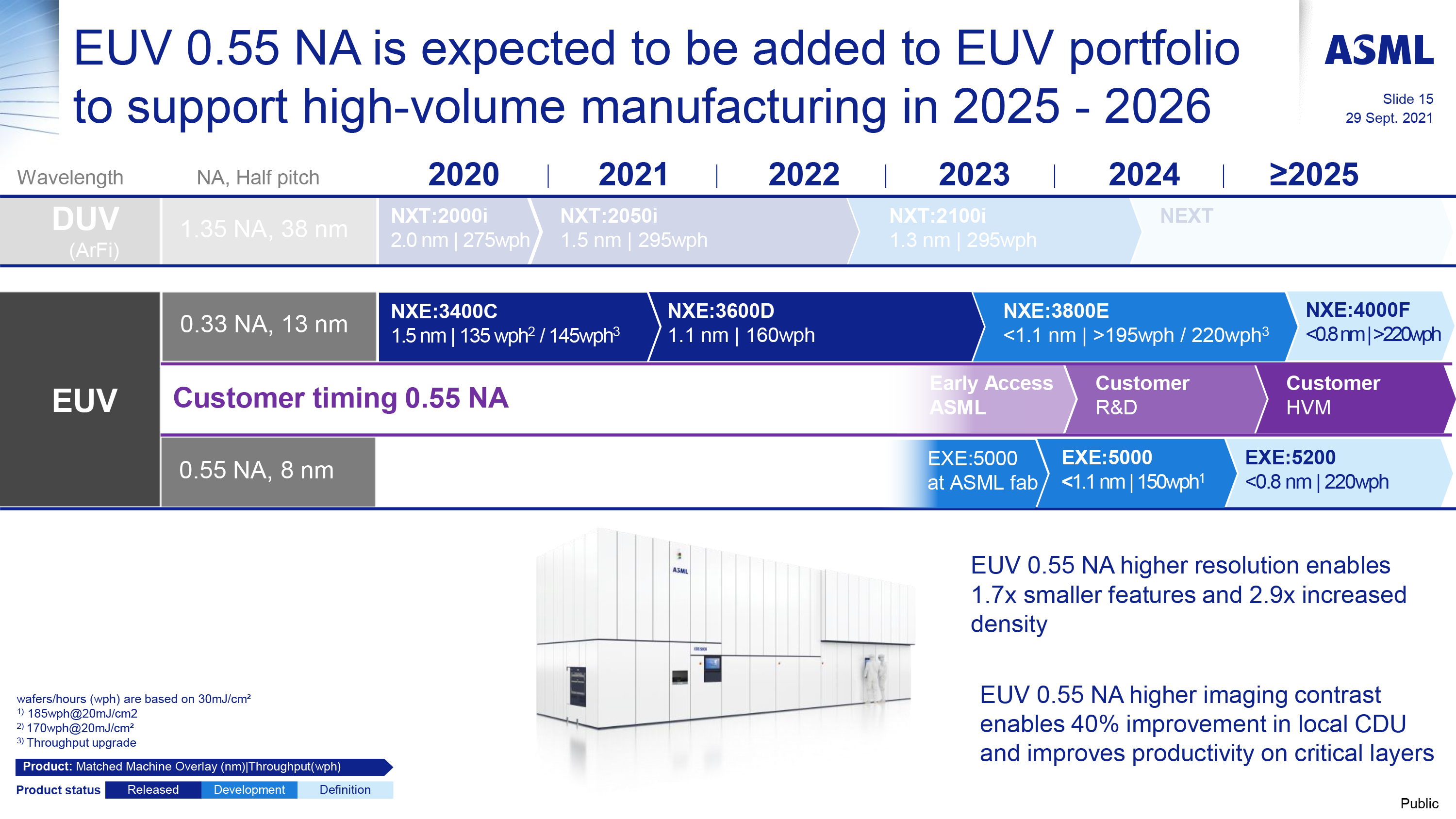This week,ASMLdelivered its 3rd Generation extreme ultraviolet (EUV) lithography tool, theTwinscan NXE:3800E, with a projection lens featuring a 0.33 numerical aperture. The system significantly increases performance compared to the existing Twinscan NXE:3600D machine. It is designed for fabricating chips at leading-edge technologies, including 3nm, 2nm, and small nodes in the next few years.
The ASMLTwinscan NXE:3800Erepresents a leap forward inLow-NA EUVlithography regarding performance (the number of wafers processed per hour) and matched machined overlay. The new system can process over 195 wafers per hour at a 30 mJ/cm^2 dose and promises a further increase in performance to 220 wph with a throughput upgrade. In addition, the new tool offers a less than 1.1 nm-matched machine overlay (wafer alignment accuracy).

“Chipmakers have a need for speed,” ASML revealed in a statement published on X. “The first Twinscan NXE:3800E is now being installed in a chip fab. With its new wafer stages, the system will deliver leading edge productivity for printing advanced chips. We are pushing lithography to new limits.”
Increased throughput will increase the economic efficiency of the Twinscan NXE:3800E machine when producing chips on4nm/5nmand 3nm-class process technologies for logic makers. The improved performance of ASML’s Twinscan NXE:3800E is expected to significantly mitigate one of the primary drawbacks ofEUV technology, which is its relatively low performance, thereby enabling more efficient and cost-effective chip production. This will make process technologies that rely on EUV more accessible to chip designers with budgets that are not as vast as those of Apple, AMD, Intel, Nvidia, and Qualcomm. Also, the tool will be crucial for memory makers such as Micron, Samsung, and SK Hynix.

In addition, the Twinscan NXE:3800E’s enhanced performance will be particularly useful for making chips on 2nm and subsequent classes of fabrication technologies that will need EUV double patterning. Improvements in the matched machine overlay will benefit sub-3nm-class production nodes.
However, the sophistication and capabilities of machines like the NXE:3800E come at a substantial cost, with a price tag of around $180 million each. Such high costs mean it takes some time to depreciate the costs of these lithography tools. However, for ASML’s clientele, which comprises a select group of significant logic and memory fabrication companies, the NXE:3800E offers a path to bolster their production capabilities of cutting-edge chips. This is crucial for these companies as they strive to meet the growing global demand for semiconductors, expand their production capacities, and manage the economics of chip manufacturing. Introducing more advanced and efficient EUV scanners like the NXE:3800E is critical to achieving these objectives.

Looking ahead,ASMLis not resting on its laurels, with plans for further innovation in the form of theTwinscan NXE:4000F, another generation of Low-NA EUV scanner, slated for release around 2026. This ongoing development underscores ASML’s commitment to advancing Low-NA EUV manufacturing technology despite the looming adoption of High-NA litho tools.
Get Tom’s Hardware’s best news and in-depth reviews, straight to your inbox.
Anton Shilov is a contributing writer at Tom’s Hardware. Over the past couple of decades, he has covered everything from CPUs and GPUs to supercomputers and from modern process technologies and latest fab tools to high-tech industry trends.